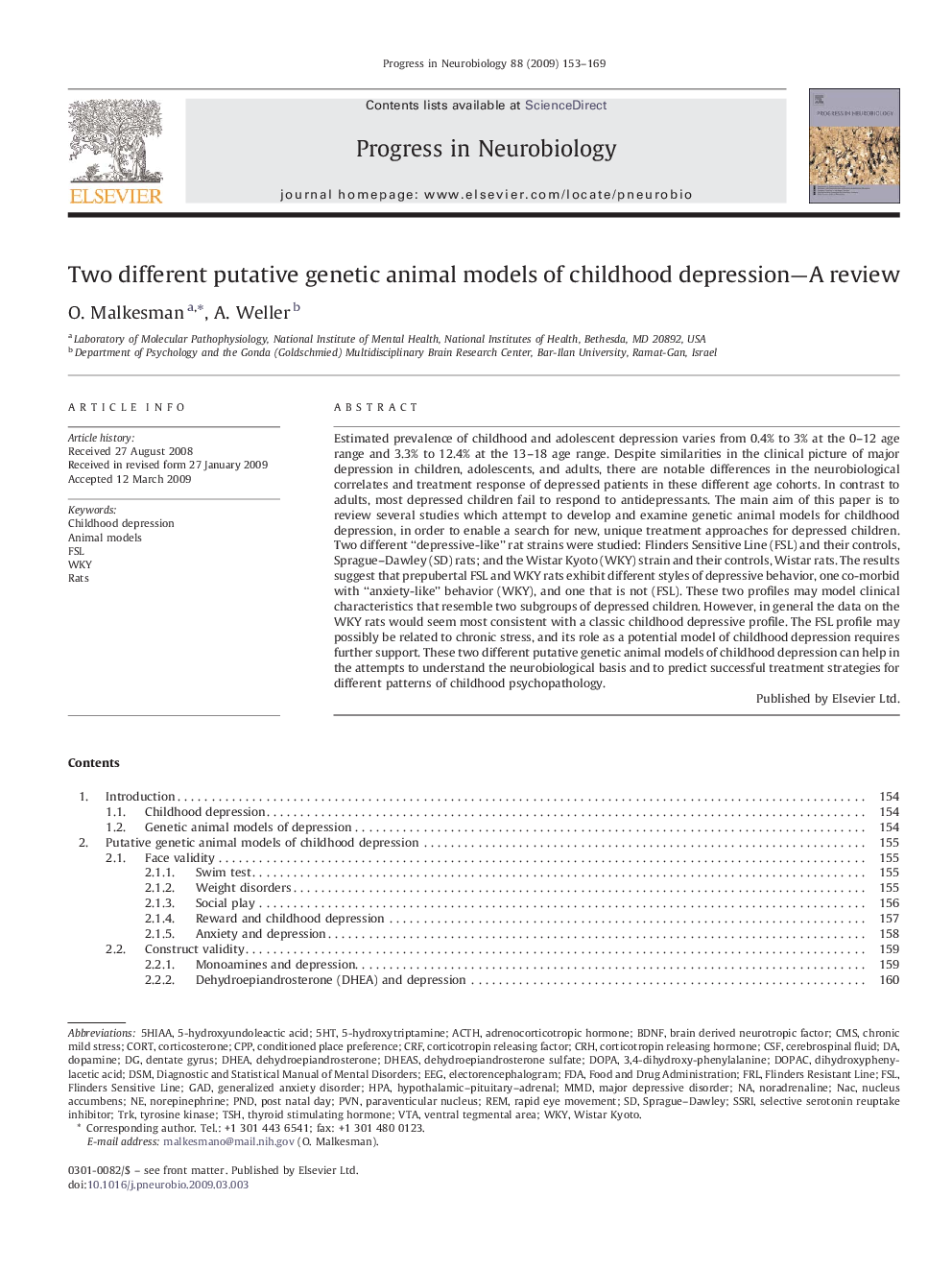| کد مقاله | کد نشریه | سال انتشار | مقاله انگلیسی | نسخه تمام متن |
|---|---|---|---|---|
| 4353711 | 1298493 | 2009 | 17 صفحه PDF | دانلود رایگان |
عنوان انگلیسی مقاله ISI
Two different putative genetic animal models of childhood depression-A review
دانلود مقاله + سفارش ترجمه
دانلود مقاله ISI انگلیسی
رایگان برای ایرانیان
کلمات کلیدی
CPPDHEAACTHFDAMMDFlinders resistant lineFRL5-hydroxytriptamineDHEASFSL5HIAACMSDOPAC5HTdehydroepiandrosteroneDSMCRHPNDNACDOPACRFGADBDNF - BDNF یا فاکتور نورونزایی مشتقشده از مغز generalized anxiety disorder - اختلال اضطراب فراگیرMajor depressive disorder - اختلال افسردگی عمدهchronic mild stress - استرس مزمن مزمنconditioned place preference - ترجیح محل موظف استDopamine - دوپامینdihydroxyphenylacetic acid - دی هیدروکسی فنیل اسیدهای اسیدDiagnostic and Statistical Manual of Mental Disorders - راهنمای تشخیصی و آماری اختلالهای روانیpost natal day - روز تولدFood and Drug Administration - سازمان غذا و داروdehydroepiandrosterone sulfate - سولفات dehydroepiandrosteronedentate gyrus - شکنج دندانه دارcorticotropin releasing factor - عامل آزاد کننده کورتیکوتروپینbrain derived neurotropic factor - عامل مغز استخوان مغز استخوان استFlinders sensitive line - فلیندرز حساس خطPVN - مالیات بر ارزش افزودهCerebrospinal fluid - مایع مغزی نخاعیCSF - مایع مغزی نخاعیHPA - میلی بار یا هکتوپاسکالEEG - نوار مغزیnoradrenaline - نورآدرنالین norepinephrine - نوراپی نفرینNucleus accumbens - هسته accumbensadrenocorticotropic hormone - هورمون adrenocorticotropiccorticotropin releasing hormone - هورمون آزاد کننده کورتیکوتروپینhypothalamic–pituitary–adrenal - هیپوتالاموس-هیپوفیز-آدرنالCORT - کورتCorticosterone - کورتیکوسترون
موضوعات مرتبط
علوم زیستی و بیوفناوری
علم عصب شناسی
علوم اعصاب (عمومی)
پیش نمایش صفحه اول مقاله

چکیده انگلیسی
Estimated prevalence of childhood and adolescent depression varies from 0.4% to 3% at the 0-12 age range and 3.3% to 12.4% at the 13-18 age range. Despite similarities in the clinical picture of major depression in children, adolescents, and adults, there are notable differences in the neurobiological correlates and treatment response of depressed patients in these different age cohorts. In contrast to adults, most depressed children fail to respond to antidepressants. The main aim of this paper is to review several studies which attempt to develop and examine genetic animal models for childhood depression, in order to enable a search for new, unique treatment approaches for depressed children. Two different “depressive-like” rat strains were studied: Flinders Sensitive Line (FSL) and their controls, Sprague-Dawley (SD) rats; and the Wistar Kyoto (WKY) strain and their controls, Wistar rats. The results suggest that prepubertal FSL and WKY rats exhibit different styles of depressive behavior, one co-morbid with “anxiety-like” behavior (WKY), and one that is not (FSL). These two profiles may model clinical characteristics that resemble two subgroups of depressed children. However, in general the data on the WKY rats would seem most consistent with a classic childhood depressive profile. The FSL profile may possibly be related to chronic stress, and its role as a potential model of childhood depression requires further support. These two different putative genetic animal models of childhood depression can help in the attempts to understand the neurobiological basis and to predict successful treatment strategies for different patterns of childhood psychopathology.
ناشر
Database: Elsevier - ScienceDirect (ساینس دایرکت)
Journal: Progress in Neurobiology - Volume 88, Issue 3, July 2009, Pages 153-169
Journal: Progress in Neurobiology - Volume 88, Issue 3, July 2009, Pages 153-169
نویسندگان
O. Malkesman, A. Weller,